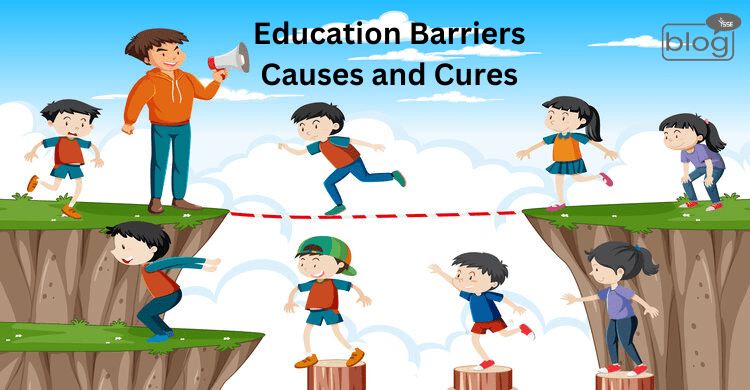Who has not heard of education as a fundamental right? What is a fundamental right? Basic, individual rights that are named and guaranteed by the constitution can be denoted as fundamental rights. But does every child really have access to it? Let’s go through some common scenarios.
It is estimated that in 2021, the GEM and UIS report shows that around 244 million children and youth between the ages of 6 and 18 worldwide were still missing school. So what are the main causes? There are some factors that can be identified as obstacles to this problem. They contain-
1. Lack of funding for education:
In many cases, it is seen that due to the lack of schools closed to the home, children have to walk long distances and sometimes girls are attacked in this way. Adequate spaces, classrooms and materials are also missing. Sometimes the number of students exceeds 100. And because of underqualified teachers, students are not getting a proper education. In 1 in 3 countries, less than three-quarters of teachers are trained to national standards. Unfortunately, developing countries rely on foreign aid and foreign funding to educate their people.
2. Life in war and conflict zones:
Life in a war zone really saps the essence of human rights. Because there is always a rush and uncertainty, children really cannot continue their education. According to statistics, more than 240 million children worldwide have had their education disrupted due to war and violent conflict. They are either killed, or otherwise directly affected by violence, or they have lost access to education.
3. Gender:
Gender is still the biggest excuse for denying a child’s right to education. Girls are usually denied access to education. Rather, due to poverty and false beliefs, they are forced to help with household chores and take care of their siblings. 130 million girls are denied the right to an education. In Chad, only 1 out of 7 schools has drinking water, only 1 out of 4 has a toilet. But only one-third of the toilets that exist are for girls only.
4. Poverty:
Many children are withdrawn from school and sent to work for extra income. Once they don the coat of responsibility, there is no looking back. About 171 million children in developing countries are stunted by hunger, and a study shows that stunted children are 19% less likely to be able to read by age eight.
5. Disability:
Between 93 and 150 million children with disabilities worldwide are denied access to education. And in some of the world’s poorest countries, 95% of children with disabilities do not go to school. Although there are several sources of funding, none are sufficient to ensure and have available the full range of necessary services such as equipment, assistants, therapeutic staff, interpreters. .
6. Cultural barriers:
Since the world consists of different cultures, religions, languages, there is diversity in the education sector. So what are the cultural factors that influence learning?
These include racism, stereotyping, communication with native speakers, lack of identification and familiarity with the culture, education system, discrimination, and also the position of the student’s culture in the eyes of others.
Tips to improve the situation –
Many methods can be used to remove barriers –
1. Try to compare the material they are learning with their everyday lives and allow them to figure things out for themselves. Give them plenty of context.
2. The tones used must be encouraging and motivating. They should not feel intimidated or overly friendly at the same time.
3. Correct language should be maintained.
4. Teachers should be properly trained, and appointment of teachers must be properly followed.
5. Limit distractions.
6. Inform parents through campaigns and other social awareness activities about child labour and discrimination.
7. Increase students’ self-confidence.
8. Offer interactive learning opportunities.
9. It should be strictly monitored whether funds are properly utilized or not.
10. Focus on the child’s disability and facilitate their learning.
11. Diversity must be respected and properly maintained.
We must remember
“Education is the most powerful weapon which you can use to change the world.” —Nelson Mandela.
To read more blogs like this, click here
Writer :
Afsana Khanom Monika
Intern, Content Writing Department
YSSE

